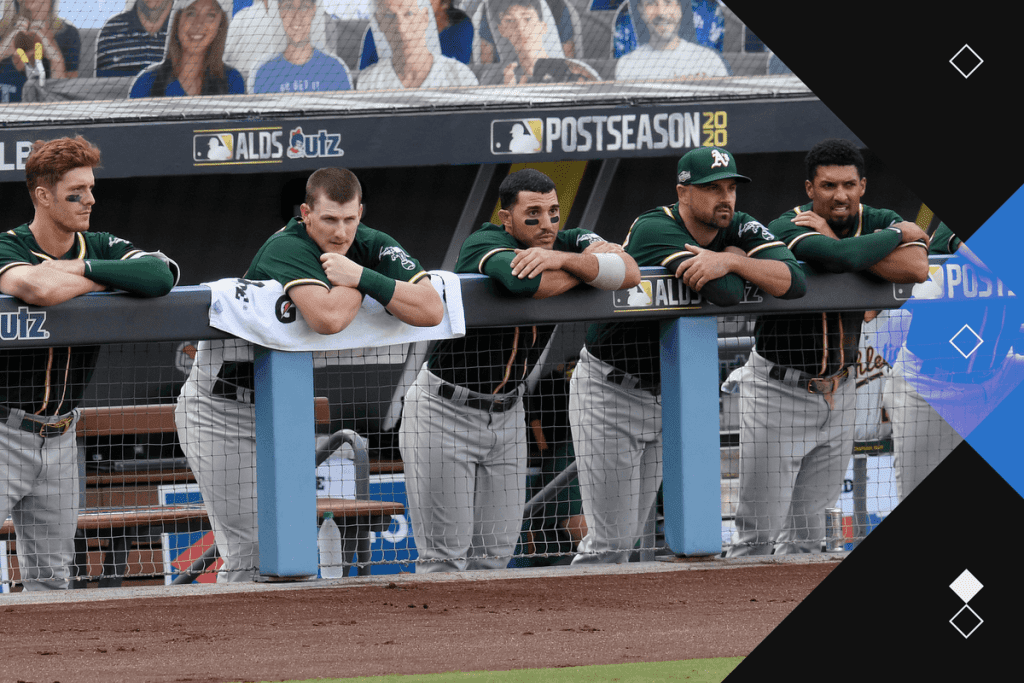The shortened baseball season of 2020 was challenging for all involved. Players and coaches do not fondly remember it, and even the team that secured a championship that season faced skepticism regarding the validity of their achievement for years to come.
Nevertheless, some teams and players were significantly impacted by the condensed season—especially regarding finances, competitiveness, and their legacies. Below are some of those most affected by the 102-game loss in 2020.
Oakland Athletics
Entering 2020 after two consecutive 97-win seasons, the Athletics appeared poised for success. Their infield included MVP candidates Marcus Semien, Matt Olson, and Matt Chapman. With a rotation featuring Chris Bassitt, Frankie Montas, and rookie Jesús Luzardo, along with closer Liam Hendriks, the team proved their worth over a 60-game season, winning the AL West with a 36-24 record despite Chapman’s season-ending hip injury.
However, their reward for overcoming the Astros and clinching the division was an extended postseason format—something that often does not play to the A’s strengths. They first needed to defeat the Chicago White Sox in a three-game Wild Card series (held at home without fans), before facing Houston in the Division Series at a neutral venue, where they lost three games to one.
Had the season been 162 games, perhaps the Astros would have corrected their course, making the AL West race more competitive. The A’s squad seemed well-equipped to challenge Houston but missed the opportunity for a typical home-field advantage in the ALDS. Ultimately, that postseason disappointment hastened the breakup of the team’s core, with Semien leaving in free agency, and Chapman, Olson, and Bassitt traded the following season. The prospect of a new stadium in Oakland also lost momentum.
Cincinnati Reds
The Reds went all-in for the 2020 season, beginning with a trade for Trevor Bauer in July 2019, despite being under .500 at the time. They sought to bolster their rotation alongside Luis Castillo, Sonny Gray, and Tyler Mahle. They made significant investments that winter, acquiring offensive talents like Mike Moustakas, Nick Castellanos, and Shogo Akiyama.
Preseason projections ranked the Reds as the potential NL Central champions, creating a sense of optimism. However, despite a slow start, they broke their seven-year postseason drought with a late surge but fell flat in the wild-card round against Atlanta, failing to score in a two-game sweep and playing without any fans due to pandemic restrictions. This left them without a chance to capitalize on their offseason expenditures. By the end of 2022, Bauer, Castillo, Gray, Moustakas, Castellanos, and Akiyama were all gone.
Giancarlo Stanton
Giancarlo Stanton’s Hall of Fame candidacy largely hinges on his power-hitting ability, with 429 career home runs. Reaching the 500-mark is likely a prerequisite for serious consideration for Cooperstown. Notably, players are expected to hit their peak home run totals in their age-29 and age-30 seasons. For comparison, Sammy Sosa hit 129, Aaron Judge 101, and Mike Schmidt 93 during those years; Stanton, however, managed just seven.
This deficit can be attributed to significant injuries that limited his play during the 2019 season and a month of 2020. The truncated season deprived Stanton of chances to accumulate home runs. While he may have missed additional games due to injury, his career average suggests that, even if he played two-thirds of the season, he could have added at least 17 more homers—critical in his quest for 500.
Jacob deGrom
Unlike Stanton, Jacob deGrom’s Hall of Fame argument is not based on counting statistics. As he approaches 37, he has accumulated just 84 career wins, well below the standard for Hall of Fame starters. Instead, his case rests on the quality of his performances during his peak years, which were affected by the shortened 2020 season. From 2018 until mid-2021, deGrom recorded exceptional stats, including a 1.94 ERA and notable strikeout rates, outperforming pitching legends like Greg Maddux and Randy Johnson during their peak years.
If the 2020 season had been full-length, deGrom might have achieved even more, potentially winning a third Cy Young Award and joining a select group of pitchers with that accolade, several of whom are Hall of Famers. His candidacy may still hold water in the future, but 20 more standout games in 2020 would significantly strengthen his case.
The Career Years
Reflecting on MVP and Cy Young voting from five years ago often highlights outstanding performances from various players during that random season. A look back at 2020 reveals many players who thrived over 60 games but would not maintain that performance over a full 162-game season. Notable names include home run leader Luke Voit, unanimous AL Rookie of the Year Kyle Lewis, and top performers like Dinelson Lamet and Dylan Bundy.
While many of these players might not replicate their 2020 stats over an entire season, they were unexpectedly curtailed at the height of their careers, missing the chance to capitalize on their achievements in terms of pay or long-term contracts. Ultimately, many good players experienced down years, while lesser-known ones did not see their breakout moments materially affecting their earning potential.
(Top image of the A’s in their loss to the Astros during the 2020 ALDS: Harry How / Getty Images)



